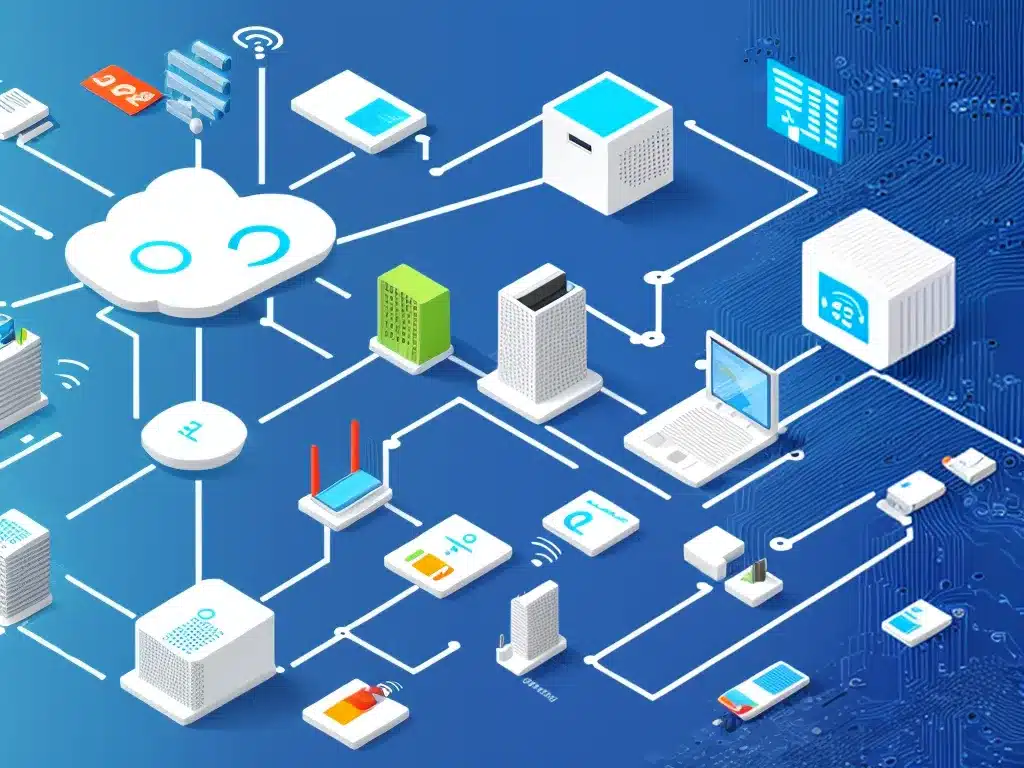
LPWAN use cases: When to Use NB-IoT, LoRaWAN, Sigfox
Introduction
Low-power wide-area networks (LPWANs) are wireless technologies designed for Internet of Things (IoT) applications that require long-range connectivity with low power consumption. The three main LPWAN technologies are NB-IoT, LoRaWAN, and Sigfox. Each has unique capabilities that make them suitable for different IoT use cases. In this article, I will compare NB-IoT, LoRaWAN, and Sigfox to help you determine which technology to select for your specific application.
Overview of NB-IoT, LoRaWAN, and Sigfox
NB-IoT stands for Narrowband Internet of Things. It is a cellular-based LPWAN technology that uses licensed spectrum bands. NB-IoT is optimized for applications that need to send small amounts of data over long distances from devices with limited power sources.
LoRaWAN stands for Long Range Wide Area Network. It uses unlicensed spectrum bands and operates in a star-of-stars topology where end devices connect to gateways that relay messages to a central network server. LoRaWAN offers bidirectional communication and mobility support.
Sigfox is a proprietary LPWAN technology that also uses unlicensed spectrum. It employs a star network topology and offers simple uplink communication for remote sensing and monitoring use cases.
The table below summarizes the key differences between the three LPWAN technologies:
| | NB-IoT | LoRaWAN | Sigfox |
|-|-|-|-|
|Underlying technology|Cellular|Proprietary|Proprietary|
|Spectrum usage|Licensed|Unlicensed|Unlicensed|
|Architecture|Star|Star-of-stars|Star|
|Mobility|Yes|Yes|No|
|two-way communication|Yes|Yes|Limited|
|Range|1-10 km urban, 10-40 km rural|5-15 km urban, 15-40 km rural|10-50 km urban, 40-60 km rural|
|Data rate|High throughput (250 kbps)|Intermediate throughput (0.3-50 kbps)|Low throughput (10-1,000 bps)|
|Battery life|~10 years|5-10 years|10-20 years|
When to Use NB-IoT
I recommend using NB-IoT for applications that require:
-
Long range connectivity – NB-IoT provides excellent coverage across wide areas using cellular networks. It can reach difficult locations where no other connectivity is available.
-
Low power consumption – NB-IoT is designed for long battery life up to 10 years. This makes it ideal for devices that are costly or difficult to service and recharge.
-
Mobility – NB-IoT supports mobility so it can be used for tracking applications with assets that are moving or being transported over long distances.
-
High data rates – NB-IoT has higher throughput compared to other LPWANs so it suits applications sending larger data packets intermittently.
-
Secure connectivity – NB-IoT provides secure data transmission over licensed cellular bands and integrates easily with mobile network security.
Use cases well-suited to NB-IoT:
-
Smart meters – For collecting utility usage data from meters in difficult to reach locations. Provides long battery life.
-
Asset tracking – For tracking shipping containers, pallets, and other assets that are transported over long distances.
-
Infrastructure monitoring – Eg. bridges, railways, pipelines etc. Needs long range and long battery life.
-
Smart cities – For applications like smart lighting, waste management, pollution monitoring etc.
When to Use LoRaWAN
I recommend considering LoRaWAN when you need:
-
Low cost deployment – LoRaWAN networks can be built economically using unlicensed spectrum without recurring cellular fees.
-
High network capacity – LoRaWAN has high network capacity as multiple gateways can be deployed. It can support large-scale deployments.
-
Two-way communication – LoRaWAN supports bidirectional communication so it can send data and also allow remote configuration of nodes.
-
Mobility – Devices on LoRaWAN network can roam across different gateways while maintaining connectivity.
-
Intermediate data rates – LoRaWAN has higher data rates than Sigfox while maintaining long battery life.
Use cases suitable for LoRaWAN:
-
Smart cities – For environmental sensors, parking sensors, waste management etc. Needs lower costs and two-way communication.
-
Supply chain management – For monitoring assets in transit across geographical areas. Provides mobility support.
-
Smart agriculture – For soil monitoring devices, irrigation control, tracking livestock etc. Requires sensors spread over large farms.
-
Smart buildings – For room occupancy monitoring, energy management, asset tracking etc. across large facilities.
When to Use Sigfox
Sigfox is a good choice when you need:
-
Ultra low power consumption – Sigfox allows battery life up to 20 years making it the best choice for low maintenance devices.
-
Lowest cost connectivity – Sigfox has minimal hardware costs and no spectrum licensing fees associated with deploying devices.
-
Simple uplink messaging – Sigfox is ideal for simple remote sensing applications just needing to relay small data packets from devices periodically.
-
Wide range – Sigfox can provide connectivity across tens of kms even in remote areas.
Sigfox suits applications like:
-
Smart meters – For gas/water meters that just need to transmit reading periodically. Provides long battery life.
-
Asset monitoring – For tracking non-moving assets where location is not critical.
-
Infrastructure monitoring – Such as oil & gas pipelines, railway tracks, wind turbines etc. Just need simple data uplink.
-
Environmental monitoring – For flood or fire sensors which can be deployed in remote areas.
Conclusion
In summary, NB-IoT, LoRaWAN and Sigfox all address the needs of long range LPWAN applications but have different strengths:
-
NB-IoT excels at long range connectivity with high throughput for mobile applications.
-
LoRaWAN provides two-way communication for large-scale sensor networks at low cost.
-
Sigfox is best for simple low-power uplink messaging over long distances.
Assess your application requirements and determine which technology aligns best with your use case needs. Performing prototyping and proofs of concept is recommended to validate performance. This will ensure you select the right LPWAN technology for your IoT deployment.












